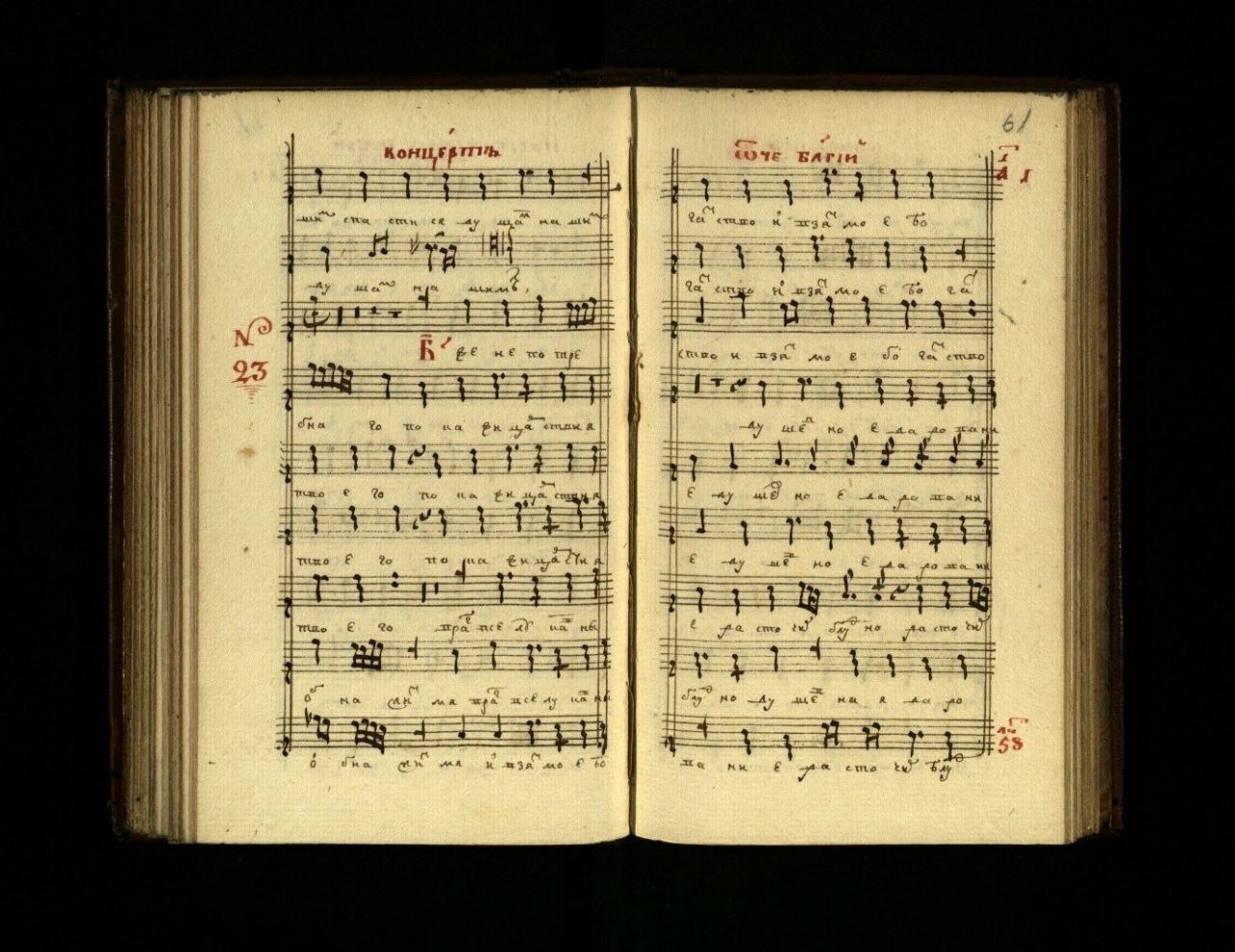History of the genre
Ukrainian musical Baroque is represented by polyphonic singing, known as partes singing. It existed during the 17th and first half of the 18th centuries and united Ukrainians living in the territory of the Kyiv Metropolis in the Grand Duchy of Lithuania and the Polish-Lithuanian Commonwealth, as well as in the Cossack state of Zaporizhzhya, which, as a result of political events, became part of the Grand Duchy of Moscow (from 1721 — the Russian Empire).
Ukrainian partes singing was directly linked to the church singing tradition of Orthodox and Uniate worship, represented written culture and required special professional training and long-term education from choristers. It originated in Lviv among the Holy Assumption Orthodox Brotherhood and was already known at the end of the 16th century. It quickly spread among the Orthodox brotherhoods that were formed in the large cities of the Kyiv Metropolis. Gradually, it reached the eastern outskirts of the united Polish-Lithuanian state (the cities of Kyiv and Lutsk), where its active development began.

Partes singing is a type of polyphony based on linear voice leading and a three-note vertical structure. Polyphonic techniques are very important, as they contribute to the emergence of the principle of word repetition and the development and expansion of musical composition. The polyphonic vertical is based on the performance capabilities of a mixed choir, consisting of different timbres of singing parts (treble, alto, tenor, bass) and covering the entire sound range. The choir was often doubled or tripled, which led to the formation of 8- and 12-voice compositions, which were extremely popular in the part-singing era, and the formation of an effective practice of choirs singing in turn.
What is a partes concert?
In the mid-17th century, signs of concert form began to appear in part-singing polyphony, which until then had developed in pre-concert forms. The partes-singing concert emerged as a large single-movement work. Its form was based on the principle of amplification, i.e. the internal expansion of a musical composition, including through the use of polyphonic means. The musical fabric is organised according to the principle of contrast, typical of Baroque art, which encompasses all levels of the musical whole: tempo, texture, dynamics, metre, etc. An exceptional feature of part-song concerts was the extraordinary technical sophistication of the vocal parts, which made the concerts so difficult to perform. The part-song concert genre first came to prominence in the work of the outstanding Ukrainian composer of the second half of the 17th century, Mykola Dyletskyy, a graduate of the Jesuit Academy in Vilnius.
Apart from the few authored examples of the concerto genre created by contemporaries and followers of Diletsky, hundreds of anonymous partes concertos have survived, whose composers remain unknown. Yet in terms of quality they are in no way inferior to the authored works — and in some cases even surpass them.
Partes compositions were never printed; they were copied by hand into large manuscript collections and written out by voice into separate leather-bound books, known as poholosnyky (partbook). A set of poholosnyky formed a complete collection, which could contain several dozen works.

Lost and restored heritage
Over time, some books were lost. For a modern performance of a partes work, the choral score must be restored from the parts available in the songbooks. If some have been lost, the lost parts have to be reconstructed or searched for in other manuscript collections. Such collections are found in Ukraine and beyond. A large amount of Ukrainian materials were taken to the Russian Empire at the time.
To restore choral scores, special skills are required to read the Kyiv square notation used to record parts and the singing keys used to record vocal material. These can be used to determine the part if it is not marked in the manuscript.

Partes concerts by Mykola Dyletskyy, Herman Levytskyy, and anonymous authors, as well as ‘Cherubic’ from the Divine Service by Symeon Pekalytskyy, will be performed by the ‘Homin’ choir conducted by Vadym Yatsenko at a concert in the Lviv Organ Hall. These are works for 4, 8, and 12 voices. The concert will begin with the cantata ‘Merciful Mother’ by Dmytro Tuptalo. A cantata is a spiritual song sung in three-part harmony; this type of harmony was incorporated into polyphonic partes singing concerts and became the basis for numerous ensemble compositions that contrasted with polyphonic choral tutti.
Partes composition reflects the trends of the High Baroque, so the performance of a concert programme of Ukrainian Baroque partes is an art form intended for a knowledgeable audience, as well as for music lovers who want to discover the grandeur of this unique phenomenon in the history of choral performance.
***
Territories of Culture project is produced in partnership with Persha Pryvatna Brovarnya and is dedicated to researching the history and transformation of Ukrainian cultural identity.







